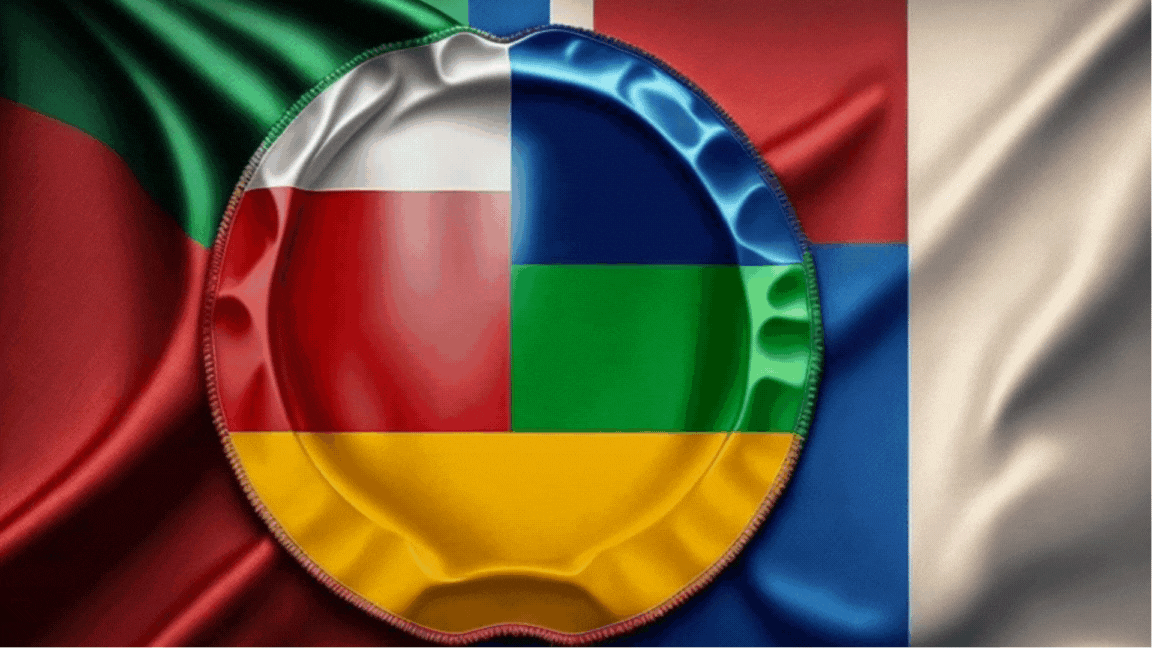
Nearly 16,600 people passed through the Darién Gap in past August, with Venezuela again as the country with more nationals going into the dangerous jungle on their way to the “American dream”. Seven out of ten migrants were Venezuelan, followed far behind by Colombians (925), Vietnamese (interesting, 524), Ecuadorians (489), Indians (444), Haitians (418), Nepalese (239) and Cameroonians (210). In the whole year, a total of 238,200 migrants have already entered Panamá irregularly through the Darién, although the impact of the rhetoric and measures adopted by the still young government of José Raul Mulino can already be seen.
Among the actions are the closure of several illegal crossings along the border with Colombia and the U.S.-backed deportation flights that have left Panamanian territory with Colombian, Ecuadorian, and Indian migrants. The Herons Palace is also in negotiations to begin repatriating Chinese migrants, but it seems they have already gotten the message as there was a drastic reduction of 93% in Asian irregular crossings between July and August, reaffirming a downward trend throughout the year. Bangladesh (192), Perú (184), Afghanistan (162), and Angola (127) are the other countries with more than 100 migrants moving through the Darién in August.
Is Biden's immigration policy working?
It depends. I will focus on the cases of Venezuela, Cuba, Nicaragua, and Haiti, whose citizens benefit from a humanitarian parole program with distorted political roots in whose development the United States itself has played a decisive (negative) role. This parole program is a blessing for migrants from these countries with sponsors on the American side, giving them the possibility—once the applications are approved—to land decently at any U.S. airport, and legally access the labor market there for two years.
In another program, migrants from these countries who are in Mexico can also make use of the CBP One mobile application, which allows them to schedule an appointment to show up at one of eight official ports of entry along the southwest border. The unwritten rule is that those who get an appointment through this channel will have a positive outcome when it comes to processing their asylum cases.
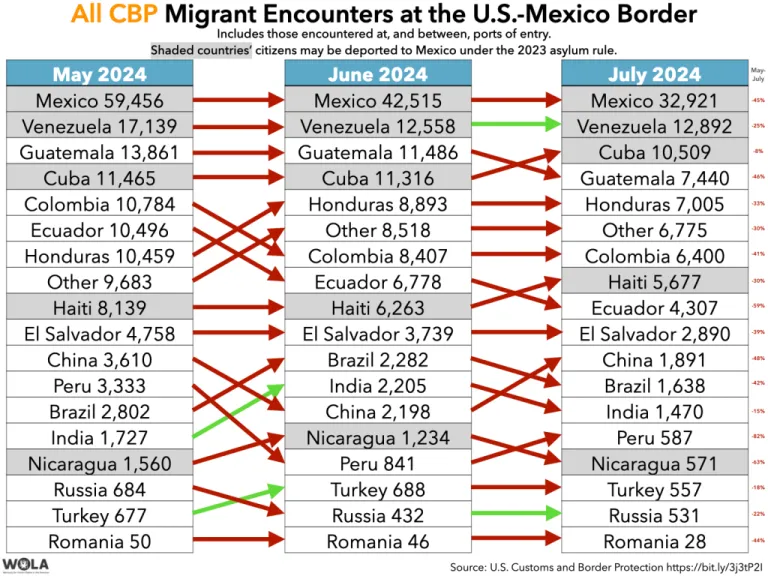 Source
SourceBut while it has enabled these secure immigration channels, the Biden administration imposed a rebuttable presumption of asylum ineligibility on those crossing the border unlawfully. The expected result is that encounters with the U.S. Border Patrol—that is, between ports of entry—will be reduced in favor of arrivals at ports of entry, preferably with an appointment obtained through CBP One. Last July, only 11% of migrants arriving at ports of entry did so without a CBP One appointment.
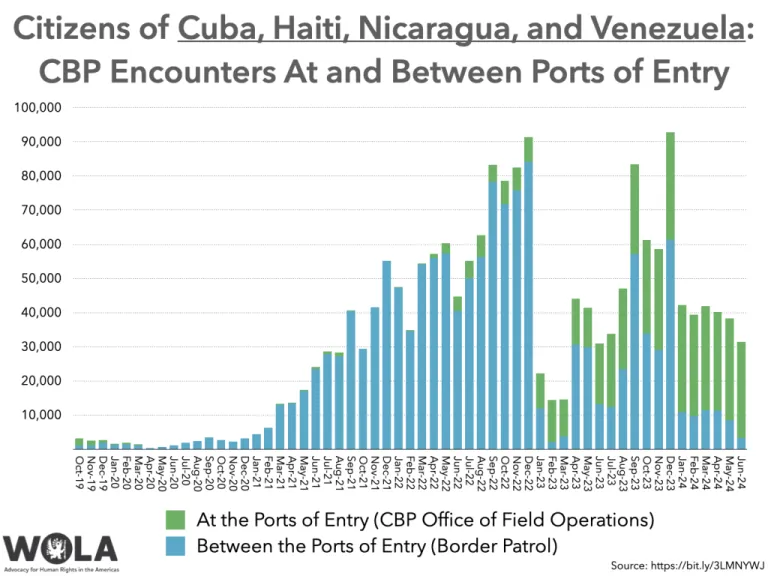 Source
SourceOf the four cases I analyze today, Nicaragua is the only one not getting the expected returns: 8 out of 10 of its migrants were encountered by Border Patrol in July. This contrasts sharply to what is happening with the other three countries, most notably Cuba: 99% of Cubans who entered through the border in July did so through an official port of entry, most presumably with a CBP One citation, as the overall statistics shared above suggest. In fact, Cuba, Haiti, and Venezuela, in that order, led this statistic in July among all countries whose nationals entered the United States through the southwest border.
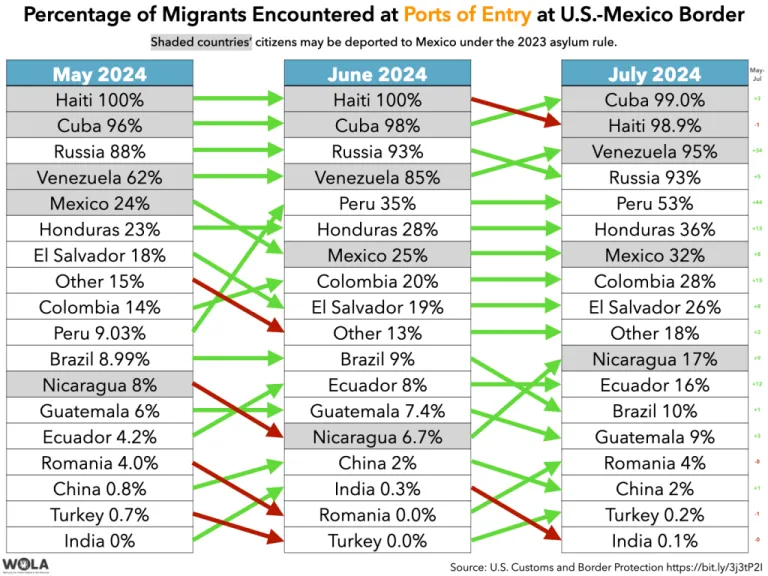 Source
SourceAll of the above would indicate in principle that Biden's strategy is working, as fewer and fewer individuals from these countries—and in general—are venturing across the border at all costs. But we would be leaving out of the analysis some key elements. First, the demands for both humanitarian parole applications and CBP One appointments outstrip the “supply” available. In the case of the mobile application, migrants need to reach at least the south of Mexico, so there is a whole previous drama that for many involves crossing the Darién and always being subjected to dangers of all kinds. The stay in Aztec land is another problematic process, as they are exposed to the security tensions there. The best solution will be to build a serious commitment to improve living conditions in the sending countries, a point on which the United States operates in a counterproductive manner, especially in the case of Cuba.
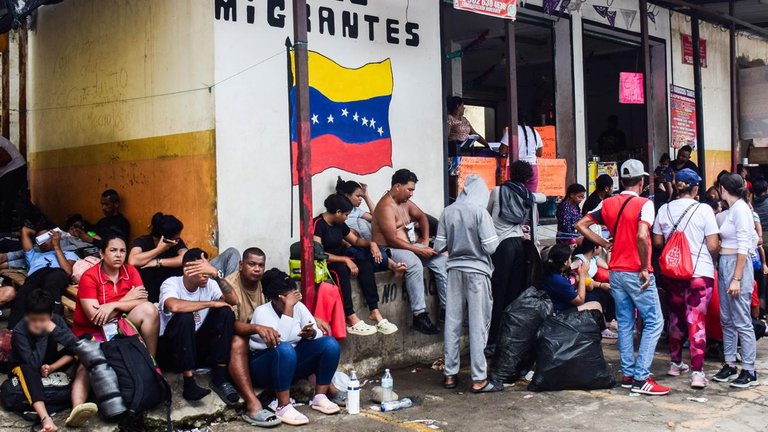 Source
SourceAnd this is all for our report today. I have referenced the sources dynamically in the text, and remember you can learn how and where to follow the LATAM trail news by reading my work here. Have a nice day.

